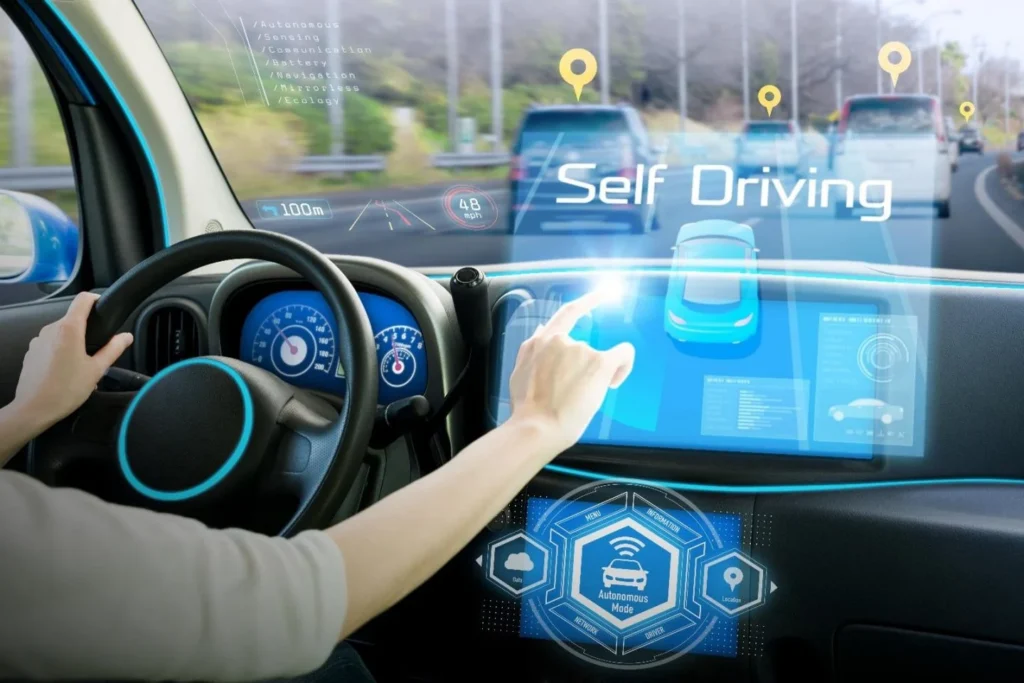Autonomous driving, also known as self-driving technology, is revolutionizing the future of transportation. Through the use of advanced sensors, artificial intelligence, and machine learning, self-driving cars are able to navigate roads and make decisions without human intervention. This groundbreaking technology has the potential to significantly impact various industries, including automotive, transportation, and logistics. The development of autonomous driving is paving the way for safer roads, reduced traffic congestion, and improved mobility for individuals with disabilities or limited mobility. As self-driving cars continue to evolve, they are shaping the future of transportation by offering a new level of convenience, efficiency, and sustainability.
One of the most intriguing aspects of autonomous driving is its potential to transform the way people and goods are transported. The concept of driverless cars, automated vehicles, and robotic transportation systems has captured the imagination of the public and sparked curiosity about the possibilities and implications of this innovative technology. As self-driving cars become more prevalent, there is growing interest in how they will impact urban planning, infrastructure, and the overall concept of mobility. The prospect of reducing accidents, minimizing environmental impact, and optimizing travel time is driving the excitement and anticipation surrounding the future of transportation.
1. The History of Autonomous Driving
Autonomous driving, also known as self-driving or driverless technology, has been a concept in the works for decades. The idea of a vehicle that can operate without human intervention has been a recurring theme in science fiction, but it wasn’t until the late 20th century that significant progress was made in this field. The development of advanced sensors, artificial intelligence, and computing power has paved the way for the realization of autonomous driving technology.
One of the key milestones in the history of autonomous driving was the DARPA Grand Challenge, a series of competitions sponsored by the US government’s Defense Advanced Research Projects Agency. These challenges spurred innovation in the field and led to the development of key technologies that are now integral to autonomous vehicles, such as lidar and computer vision systems.
2. The Technology Behind Self-Driving Cars
Self-driving cars rely on a combination of advanced technologies to navigate and operate safely on the road. These technologies include lidar, radar, cameras, and ultrasonic sensors, which provide the vehicle with a 360-degree view of its surroundings. In addition, self-driving cars use high-definition mapping systems and GPS to accurately locate themselves and plan their routes.
Artificial intelligence and machine learning algorithms play a crucial role in enabling self-driving cars to interpret and respond to the complex and dynamic environment of the road. These algorithms allow the vehicle to recognize and classify objects, predict their behavior, and make real-time decisions to ensure the safety of the passengers and other road users.
3. The Benefits of Autonomous Driving
Autonomous driving has the potential to bring about significant benefits in terms of safety, efficiency, and convenience. By eliminating human error, which is a leading cause of road accidents, self-driving cars have the potential to greatly reduce the number of traffic collisions and fatalities. In addition, autonomous vehicles can optimize traffic flow and reduce congestion through coordinated communication and precise driving behavior.
Furthermore, self-driving cars can provide increased mobility for individuals who are unable to drive due to age, disability, or other reasons. They can also offer a more relaxing and productive travel experience, as passengers can use their time in the vehicle for work, leisure, or rest, rather than focusing on driving.
4. The Challenges and Limitations of Autonomous Driving
Despite the potential benefits, the widespread adoption of autonomous driving technology faces several challenges and limitations. One of the main concerns is the ethical and legal implications of self-driving cars, particularly in the event of accidents or unforeseen circumstances. Questions about liability, insurance, and regulations surrounding autonomous vehicles still need to be addressed.
In addition, the reliability and safety of self-driving cars in all weather conditions and complex driving scenarios are still being tested and improved. Ensuring the cybersecurity of autonomous vehicles against potential hacking and malicious attacks is also a significant challenge that requires ongoing attention and investment.
5. The Impact of Autonomous Driving on Urban Planning
The widespread adoption of autonomous driving is expected to have a profound impact on urban planning and infrastructure. With the potential for increased efficiency in traffic flow and reduced need for parking spaces, cities may be able to redesign their transportation systems and allocate urban space in new ways. This could lead to more pedestrian-friendly environments, improved public transportation, and the repurposing of parking areas for green spaces or commercial development.
Furthermore, the deployment of autonomous vehicles as part of ride-sharing and on-demand transportation services could reduce the need for individual car ownership, leading to changes in urban mobility patterns and a potential decrease in the demand for parking and road infrastructure.
6. The Future of Autonomous Driving and the Automotive Industry
The automotive industry is undergoing a significant transformation as autonomous driving technology continues to advance. Traditional car manufacturers, as well as tech companies and startups, are investing heavily in the development of self-driving cars and related technologies. This shift is reshaping the competitive landscape and driving collaboration and partnerships between different industry players.
Furthermore, the rise of autonomous driving is expected to bring about new business models and revenue streams, such as subscription-based mobility services and in-vehicle entertainment and productivity offerings. As self-driving cars become more prevalent, the automotive industry is poised for a major shift in consumer preferences and market dynamics.
7. The Regulatory and Policy Considerations for Autonomous Driving
The deployment of autonomous driving technology raises important regulatory and policy considerations that need to be addressed by governments and transportation authorities. These considerations include standards for safety and performance, licensing and certification requirements for autonomous vehicles and operators, and the integration of self-driving cars into existing traffic laws and infrastructure.
In addition, the ethical and social implications of autonomous driving, such as job displacement for professional drivers and the impact on public transportation systems, require careful consideration and proactive planning by policymakers. Collaborative efforts between industry stakeholders, government agencies, and advocacy groups are essential to create a regulatory framework that ensures the safe and responsible integration of autonomous vehicles into the transportation ecosystem.
8. The Public Perception and Acceptance of Self-Driving Cars
Public perception and acceptance of self-driving cars play a crucial role in the adoption and deployment of autonomous driving technology. While some individuals are enthusiastic about the potential benefits of self-driving cars, others have concerns about safety, privacy, and the loss of control over the driving experience.
Educating the public about the capabilities and limitations of autonomous driving technology, as well as addressing concerns through transparent communication and rigorous testing and validation, is essential to build trust and confidence in self-driving cars. Additionally, engaging with communities and stakeholders to understand their needs and preferences can help in designing and implementing autonomous transportation solutions that are socially and culturally acceptable.
Autonomous Driving: How Self-Driving Cars Are Shaping the Future of Transportation
| Topic | Description |
|---|---|
| Definition | Autonomous driving refers to the use of technology to control a vehicle’s movement without human input. |
| Benefits | Improved safety, reduced traffic congestion, and increased mobility for those unable to drive. |
| Challenges | Regulatory hurdles, public acceptance, and technological limitations are some of the main challenges. |
| Future Impact | Self-driving cars have the potential to revolutionize transportation and urban planning, leading to a more efficient and sustainable future. |
Autonomous driving, or the use of self-driving cars, is a rapidly advancing technology that has the potential to revolutionize the way we think about transportation. While there are still challenges to overcome, such as regulatory issues and public acceptance, the future impact of autonomous driving could lead to safer, more efficient, and more accessible transportation for all.



